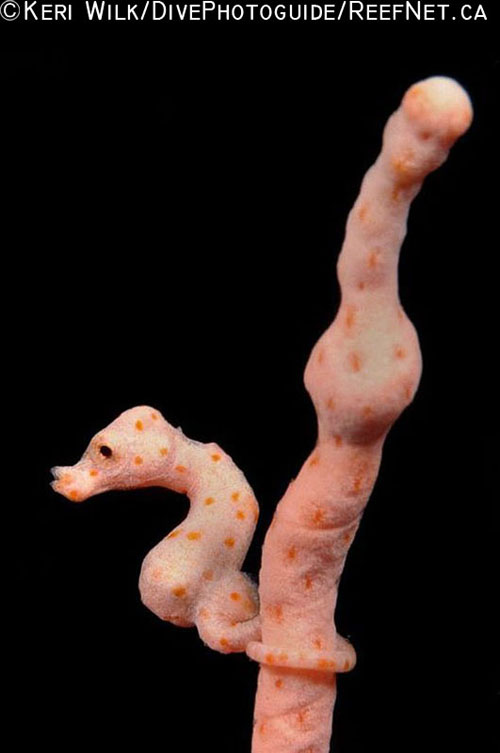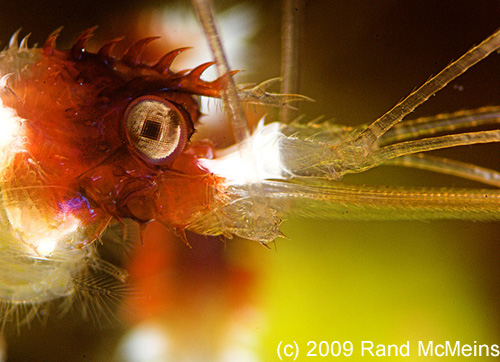Super Macro Underwater Photography - The Definitive Guide, Part 2A
Part 2A – An Intro To Super Macro Tools
by Keri Wilk
Now that you have an understanding of general macro and super macro terms, lets explore some of the tools we use for underwater super macro photography. In this installment we will discuss macro lenses and teleconverters. Part 2b will cover extension tubes and diopters.
Standard Macro Lenses
Generally, to shoot in the super macro range, you’ll need to use a “standard” macro lens (i.e. a lens that allows up to at least 1:2 magnification) in conjunction with one or more specialized supermacro tools, which will be discussed below. There are dozens of these macro lenses available for DSLR systems, from a variety of manufacturers, but the Nikon 105mm/60mm and Canon 100mm/60mm lenses are probably the most popular amongst underwater photographers. Here is a list of some other popular 1:1 macro lenses available:
Generally, to shoot in the super macro range, you’ll need to use a “standard” macro lens (i.e. a lens that allows up to at least 1:2 magnification) in conjunction with one or more specialized supermacro tools, which will be discussed below. There are dozens of these macro lenses available for DSLR systems, from a variety of manufacturers, but the Nikon 105mm/60mm and Canon 100mm/60mm lenses are probably the most popular amongst underwater photographers. Here is a list of some other popular 1:1 macro lenses available:
Going into technical detail about all of these lenses is beyond the scope of this guide, but it’s important that you understand the correlation between a lens’ focal length and its minimum working distance (the distance from the front edge of the lens to the subject at maximum magnification). In general, the longer the focal length of your primary lens, the more working distance you’ll have to play with, but there are some exceptions to this rule… like the Sigma 80mm and 150mm lenses (see the chart above) depending on lens construction.
 This characteristic might not seem terribly significant to you at first glance, since all of the lenses mentioned above can achieve the same level of magnification, but your choice of super macro tool can be directly influenced by the working distance of your primary macro lens.
This characteristic might not seem terribly significant to you at first glance, since all of the lenses mentioned above can achieve the same level of magnification, but your choice of super macro tool can be directly influenced by the working distance of your primary macro lens.
The term “minimum focus distance” should not be confused with “working distance”. A lens’ minimum focus distance is actually the smallest allowable distance from the film/sensor plane to the subject – NOT the lens to subject distance. Notice how different the minimum focus distance and working distances are for any given lens in the chart above. Often the working distance is less than HALF of the minimum focus distance. To avoid disappointment, keep this in mind when you’re researching the next macro addition to your lens family.
Intro To Super Macro Tools
A smorgasbord of tools have been designed to achieve high levels of magnification, with each type of tool having its own set of pros and cons. The choice of a super macro tool should be based on the consideration of several factors that may be relevant/important to you, possibly including:
The term “minimum focus distance” should not be confused with “working distance”. A lens’ minimum focus distance is actually the smallest allowable distance from the film/sensor plane to the subject – NOT the lens to subject distance. Notice how different the minimum focus distance and working distances are for any given lens in the chart above. Often the working distance is less than HALF of the minimum focus distance. To avoid disappointment, keep this in mind when you’re researching the next macro addition to your lens family.
Intro To Super Macro Tools
A smorgasbord of tools have been designed to achieve high levels of magnification, with each type of tool having its own set of pros and cons. The choice of a super macro tool should be based on the consideration of several factors that may be relevant/important to you, possibly including:
- magnification level
- tool versatility (interchangeable vs permanent)
- weight
- practicality (working distance? ease of use?)
- water clarity (clear vs murky)
- intended subjects (static vs shy)
- intended image use (web vs large prints)
- cost
Teleconverters
These optical tools are inserted between your primary lens and
The effects of teleconverters are illustrated in the following diagrams.
So, if teleconverters maintain working distance, work well for shy subjects, and can be stacked almost indefinitely, why wouldn’t you want to use one (or more)? Well, teleconverters are not all sunshine, lollipops and rainbows…they do in fact have a  dark side to them – quite literally. As touched on above, when a TC is added to a camera/lens system, light at the sensor plane is diminished due to the “bellows factor” (the factor by which the effective f-number gets multiplied as the lens is focused up close). A 1.4X teleconverter results in a loss of one stop of light (i.e. half the light is seen at the sensor), a 2.0X TC in 2 stops (i.e. a quarter of the light), and a 3.0X TC diminishes light by a terrifying 3 stops! You’ll need some beefy strobes to compensate that amount of light loss.
dark side to them – quite literally. As touched on above, when a TC is added to a camera/lens system, light at the sensor plane is diminished due to the “bellows factor” (the factor by which the effective f-number gets multiplied as the lens is focused up close). A 1.4X teleconverter results in a loss of one stop of light (i.e. half the light is seen at the sensor), a 2.0X TC in 2 stops (i.e. a quarter of the light), and a 3.0X TC diminishes light by a terrifying 3 stops! You’ll need some beefy strobes to compensate that amount of light loss.
Another drawback is that once you set up your underwater camera rig with a particular TC/lens combination, you’re committed to it for the entire dive. So, you might end up kicking yourself when you stumble across a mating pair of frogfish just outside your subject-size range. Before committing to the use of a teleconverter, consider doing some research or even a preliminary dive or snorkel to scout out subjects at a dive site.
Lastly, since teleconverters contain several optical elements, they inherently degrade image quality to some degree. In addition, TC's actually amplify any optical problems
Another drawback is that once you set up your underwater camera rig with a particular TC/lens combination, you’re committed to it for the entire dive. So, you might end up kicking yourself when you stumble across a mating pair of frogfish just outside your subject-size range. Before committing to the use of a teleconverter, consider doing some research or even a preliminary dive or snorkel to scout out subjects at a dive site.
Lastly, since teleconverters contain several optical elements, they inherently degrade image quality to some degree. In addition, TC's actually amplify any optical problems
associated with your primary lens (chromatic aberrations, sharpness issues, etc.). So, when TCs are stacked, these problems are compounded and can result in poor quality images.

If you need to maintain maximum working distance and don’t mind devoting a dive to a particular subject size/magnification level, then teleconverters might be the right tool for the job. Just remember the possible image degradation when stacking them, and make sure your strobe batteries are charged, because in many cases you’ll need all the power you can get!
If you need to maintain maximum working distance and don’t mind devoting a dive to a particular subject size/magnification level, then teleconverters might be the right tool for the job. Just remember the possible image degradation when stacking them, and make sure your strobe batteries are charged, because in many cases you’ll need all the power you can get!
Resources:
Richard A. Morton, “Photography for the Scientist”, 1984
Charles E. Engel, “Photography for the Scientist”, 1968
Rudolf Kingslake, “Lenses in Photography”, 1951
Rudolf Kingslake, “A History of the Photographic Lens”, 1989
Leonard Gaunt, “The Photoguide to the 35mm Single Lens Reflex”, 1973
Francis A. Jenkins and Harvey E. White, “Fundamentals of Optics”, 1957
Leslie Wilk, www.scubageek.com, 2009
RELATED CONTENT
Be the first to add a comment to this article.
You must be logged in to comment.
Sponsor
Newsletter
Travel with us
Featured Photographer
Sean Wu
Expert Photographer
Fashion and commercial photographer Sean Wu makes a splash for a living. He imagines, creates and then captures underwater scenes that defy trends and suspend gravity.
Wu have produced remarkable images for beauty, fashion and...
Sponsors